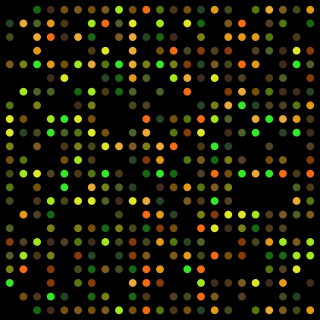This article relies too much on references to primary sources .(October 2017) (Learn how and when to remove this template message) |
| Content | |
|---|---|
| Description | A database of annotated bacterial genomes and their chromosome/genome maps |
| Data types captured | Gene sequence data, protein sequence data, general gene and protein annotation, gene positions, general genome/proteome statistics, taxonomic and phenotypic information, bacterial chromosome maps (images) |
| Contact | |
| Research center | University of Alberta |
| Laboratory | Dr. David Wishart |
| Primary citation | [1] [2] |
| Access | |
| Website | http://wishart.biology.ualberta.ca/BacMap/ (version 1.0); http://bacmap.wishartlab.com/ (version 2.0) |
| Miscellaneous | |
| Data release frequency | Updated every 2-3 months |
| Curation policy | Manually curated |
BacMap is a freely available web-accessible database containing fully annotated, fully zoomable and fully searchable chromosome maps from more than 2500 prokaryotic (archaebacterial and eubacterial) species. [1] BacMap was originally developed in 2005 to address the challenges of viewing and navigating through the growing numbers of bacterial genomes that were being generated through large-scale sequencing efforts. Since it was first introduced, the number of bacterial genomes in BacMap has grown by more than 15X. Essentially BacMap functions as an on-line visual atlas of microbial genomes. All of the genome annotations in BacMap were generated through the BASys genome annotation system. [3] BASys is a widely used microbial annotation infrastructure that performs comprehensive bionformatic analyses on raw (or labeled) bacterial genome sequence data. All of the genome (chromosome) maps in BacMap were constructed using the program known as CGView. [4] CGView is a popular visualization program for generating interactive, web-compatible circular chromosome maps (Fig. 1). Each chromosome map in BacMap is extensively hyperlinked and each chromosome image can be interactively navigated, expanded and rotated using navigation buttons or hyperlinks. All identified genes in a BacMap chromosome map are colored according to coding directions and when sufficiently zoomed-in, gene labels are visible. Each gene label on a BacMap genome map is also hyperlinked to a 'gene card' (Fig. 2). The gene cards provide detailed information about the corresponding DNA and protein sequences. Each genome map in BacMap is searchable via BLAST and a gene name/synonym search.

A chromosome is a deoxyribonucleic acid (DNA) molecule with part or all of the genetic material (genome) of an organism. Most eukaryotic chromosomes include packaging proteins which, aided by chaperone proteins, bind to and condense the DNA molecule to prevent it from becoming an unmanageable tangle.

In the fields of molecular biology and genetics, a genome is the genetic material of an organism. It consists of DNA. The genome includes both the genes and the noncoding DNA, as well as mitochondrial DNA and chloroplast DNA. The study of the genome is called genomics.
BASys is a freely available web server that can be used to perform automated, comprehensive annotation of bacterial genomes. With the advent of next generation DNA sequencing it is now possible to sequence the complete genome of a bacterium within a single day. This has led to an explosion in the number of fully sequenced microbes. In fact, as of 2013, there were more than 2700 fully sequenced bacterial genomes deposited with GenBank. However, a continuing challenge with microbial genomics is finding the resources or tools for annotating the large number of newly sequenced genomes. BASys was developed in 2005 in anticipation of these needs. In fact, BASys was the world’s first publicly accessible microbial genome annotation web server. Because of its widespread popularity, the BASys server was updated in 2011 through the addition of multiple server nodes to handle the large number of queries it was receiving.
Contents
Because of the growing interest in metagenomics and large-scale bacterial genome analysis, BacMap was extensively updated in 2012. [2] With the latest update, all of BacMap’s bacterial genome maps now have separate prophage genome maps as well as separate tRNA and rRNA maps. Each bacterial chromosome entry in BacMap now contains graphs and tables on a variety of gene and protein statistics. All of the bacterial species listed in BacMap now have bacterial 'biography' cards, with corresponding information on the microbe’s taxonomy, phenotypic traits, other descriptions and electron microscopy or other high-resolution images of the microbe itself. BacMap also has a number of updated data browsing and text searching tools that allow filtering, sorting and more facile display of the chromosome maps and their contents.

A prophage is a bacteriophage genome inserted and integrated into the circular bacterial DNA chromosome or existing as an extrachromosomal plasmid. This is a latent form of a phage, in which the viral genes are present in the bacterium without causing disruption of the bacterial cell. Pro means ''before'', so, prophage means the stage of a virus in the form of genome inserted into host DNA before attaining its real form inside host.

A phenotypic trait, simply trait, or character state is a distinct variant of a phenotypic characteristic of an organism; it may be either inherited or determined environmentally, but typically occurs as a combination of the two. For example, eye color is a character of an organism, while blue, brown and hazel are traits.






